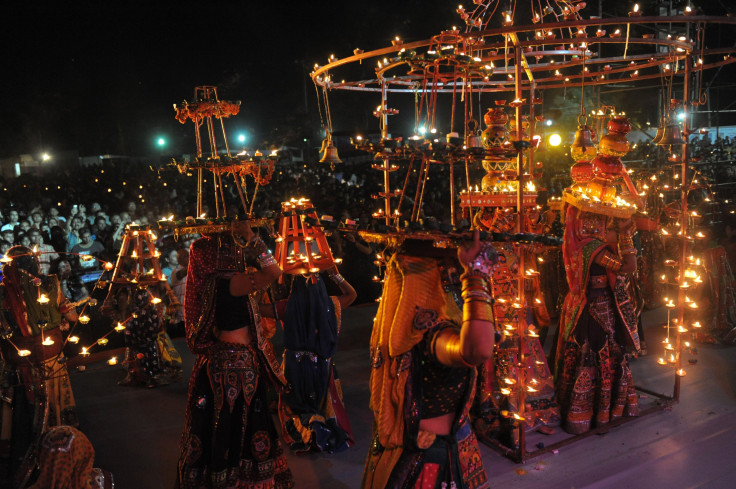What Is Navratri 2018? Hindu 'Nine Nights' Festival Celebrates Good Triumphing Evil

Navratri is a 9-night and 10-day-long festival dedicated to the Hindu goddess Durga. It is one of the most celebrated festivals of Hindus and began this year on Oct. 10.
The name of the festival is a literal translation of the number of nights the festival is celebrated for. It is celebrated in the autumn season, but the date of the festival varies each year.
Though the festival is widely celebrated across India, at the same time, the celebrations associated with it and its significance vary from one state to another. India is a country that has a wide variation in culture, which is reflected in traditions as well.
Durga represents purity and power according to Hindu beliefs and was also associated with fertility of the earth. The festival is mostly celebrated as a triumph of good over evil. According to Hindu mythology, Durga famously destroyed Mahishasura, a buffalo demon, after a battle which lasted nine nights. In the eastern and north-eastern states of India, the celebration is referred to as “Durga Puja.”
All the ten days and nine nights of the festival are usually filled with ritualistic chanting, prayers, fasting, and celebrations. In some places, festivities include traditional dance and music which can last late into the evening, and sometimes entire nights. In South India, Navratri is devoted to Goddesses’ Lakshmi, Durga and Saraswati equally, who are all forms of “Shakti” or the divine female energy.
It is also the time when farmers sow their seeds and thank goddess Durga for her blessings. They ask for healthy and surplus crops as women offer saplings of nine different types of grains in small containers to the goddess. Navratri can be said to be a time for introspection and purification as well.
People all over the country prepare for the festival by buying new clothes, decorating their houses and streets, and with traditional dance performances and fasts.
Fasting is considered as a way to invoke the "Shakti" from within a person that helps to cleanse the body and mind. But fasting does not mean a person goes completely hungry. Certain kinds of food and beverages, like grains, such as rice, as well as meat, eggs, lentil, legumes, coffee, alcohol, onion, and garlic are prohibited.
The tenth day of the festival is the celebration of Dussehra, which is when the major celebration happens.
People worship nine forms of Durga in the days leading to Navratri:
Day 1: Shailaputri, the daughter of the Himalayas.
Day 2: Brahmacharini, a woman who pursues sacred religious knowledge.
Day 3: Chandraghanta, the one that has a half-moon shaped bell.
Day 4: Kushmanda, the creator of the universe, believed to help improve health, bestow wealth and strength upon others.
Day 5: Skandamata, the one who is a symbol of motherhood.
Day 6: Katyayani, named after the sage Katya. Goddess Durga is believed to have taken birth in one form in his house.
Day 7: Kalaratri, one among the many destructive forms of Durga.
Day 8: Mahagauri, Lord Shiva’s (a Hindu God) wife.
Day 9: Siddhidatri, the provider of supernatural powers.
© Copyright IBTimes 2024. All rights reserved.





















